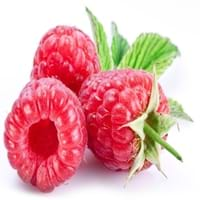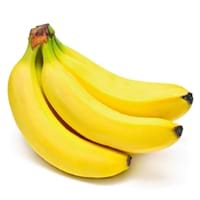Health Benefits
Cancer prevention, Heart care, Prevents macular degeneration, Reduces blood circulation problems
Cancer prevention, Diarrhea treatment, Muscle pain relief, Piles treatment, Prevents constipation, Skin cleansing, Ulcer treatment
General Benefits
Anti-inflammatory properties, Controls blood sugar levels, Digestive aid, Eye care, Helps in weight loss
Controls blood pressure, Digestive aid, Maintains healthy cholesterol level, Strengthens bones
Skin Benefits
Anti-aging benefits, Brightens and lightens complexion
Anti-aging benefits, Hydrates skin, Skin rejuvenation
Hair Benefits
Acts as moisturizer, Regulates hair growth, Shiny hair
Prevents hair loss, Shiny hair, Softening mask
Allergy Symptoms
Breathing difficulty, Eczema, Hives, Itching, Nasal congestion, Runny nose, Sneezing, Watery eyes, Wheezing
Abdominal pains, Decrease in blood pressure, Dizziness, Hives, Itching of mouth, Lightheadedness, Swelling, Swelling of mouth, tongue or lips, Weak or racing pulse, Wheezing
Side Effects
Allergic reaction
Headache, Intense headache, Tooth decay
Best Time to Eat
Best if taken as a breakfast (or empty stomach), As a snack in the late afternoon, Don't eat after meal, Morning time (before lunch)
As a snack in the late afternoon, Don't consume at night and before bed, Eat the fresh ones, avoid mixing with any other foods, don't eat after meal.
Vitamin B5 (Pantothenic Acid)
Vitamin C (Ascorbic Acid)
Vitamin K (Phyllochinone)
Phytosterol
Not Available
Calories in Fresh Fruit with Peel
Calories in Fresh Fruit without Peel
Not Available
Type
Berry
Berry, Tropical
Season
Summer
All seasons
Varieties
Amity, August Red, Boyne, Canby, Caroline, Comet, Dinkum, Dorman Red, Latham, Meeker, Black Hawk, Hayda, Lauren, Meeker and Latham
Cavendish Bananas, Lady Finger Bananas, Pisang Raja, Williams Bananas and Cooking Bananas
Color
Black, Purple, Red, Yellow
Green, Yellow
Shape
Conical
Curving Cylinder
Origin
Europe, North Asia
Papua New Guinea
Soil Type
Sandy loam
Well-drained
Climatic Conditions
Cold
Warm
Facts about
- There are more than 200 varieties of raspberries.
- In USA, 90% of the raspberries are grown in Washington, California and Oregon.
- They do not ripe after they are picked.
- A raspberry contain 100 to 120 seeds.
- As bananas contain potassium-40 which is radioactive isotope of potassium, bananas are radioactive.
- Bananas float in water.
- There are around 1000 varieties of bananas.
- Eating this fruit will cheer you up.
Top Producer
Russia
India
Other Countries
Azerbaijan, Canada, Mexico, Poland, Serbia, Spain, Ukraine, United Kingdom, United States of America
Brazil, Cameroon, China, Colombia, Ecuador, Ghana, Indonesia, Philippines, Uganda
Top Importer
United States of America
Europe
Top Exporter
Poland
Ecuador
Botanical Name
Rubus Idaeus
Musa acuminata and Musa balbisiana
Synonym
Not Available
Musa × dacca , Musa × sapidisiaca , Musa × sapientum
Subkingdom
Tracheobionta
Tracheobionta
Division
Magnoliophyta
Magnoliophyta
Class
Magnoliopsida
Liliopsida
Subclass
Rosidae
Liliidae
Order
Rosales
Zingiberales
Species
R. idaeus
M. acuminata , M. balbisiana
Generic Group
Rose
Banana
Difference Between Raspberry and Banana
We might think that Raspberry and Banana are similar with respect to nutritional value and health benefits. But the nutrient content of both fruits is different. Raspberry and Banana Facts such as their taste, shape, color, and size are also distinct. The difference between Raspberry and Banana is explained here.
The amount of calories in 100 gm of fresh Raspberry and Banana with peel is 53.00 kcal and 95.29 kcal and the amount of calories without peel is Not Available and 89.00 kcal respectively. Thus, Raspberry and Banana belong to Low Calorie Fruits and High Calorie Fruits category.These fruits might or might not differ with respect to their scientific classification. The order of Raspberry and Banana is Rosales and Zingiberales respectively. Raspberry belongs to Rosaceae family and Banana belongs to Musaceae family. Raspberry belongs to Rubus genus of R. idaeus species and Banana belongs to Musa genus of M. acuminata , M. balbisiana species. Beings plants, both fruits belong to Plantae Kingdom.









